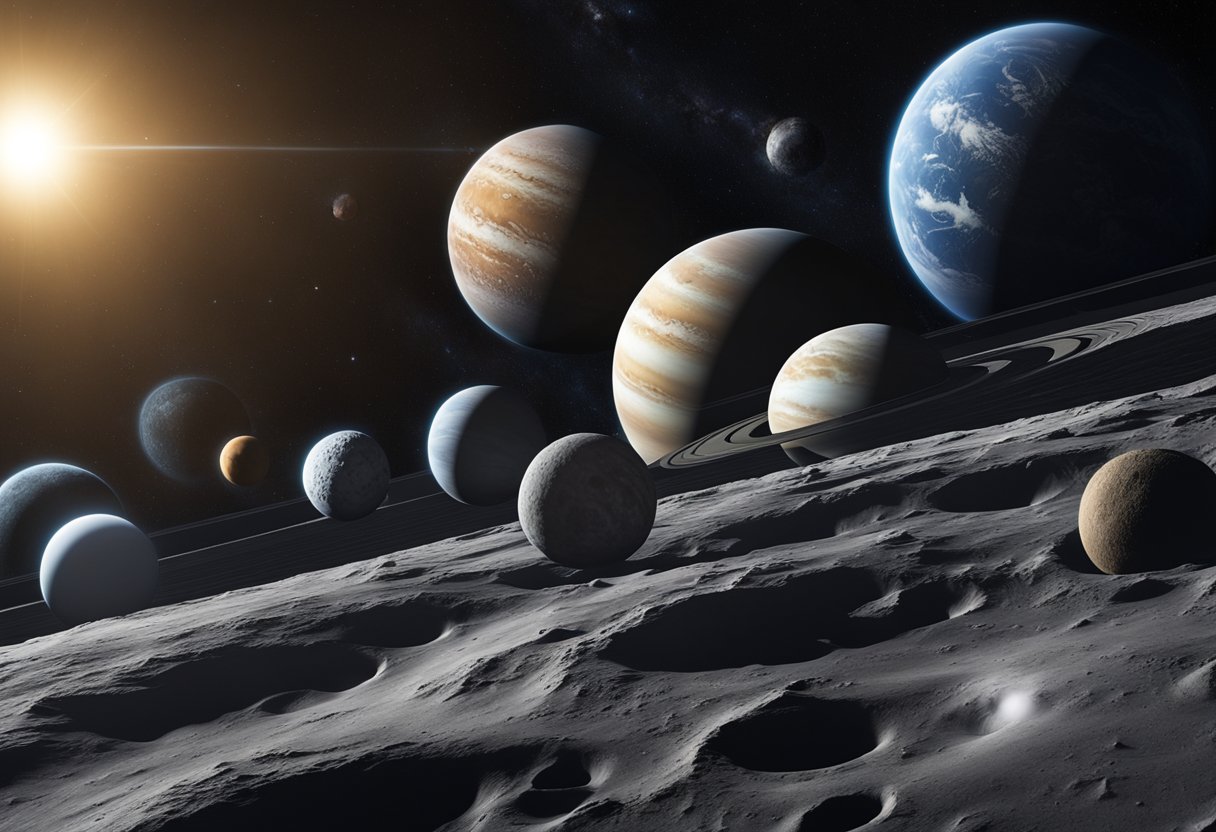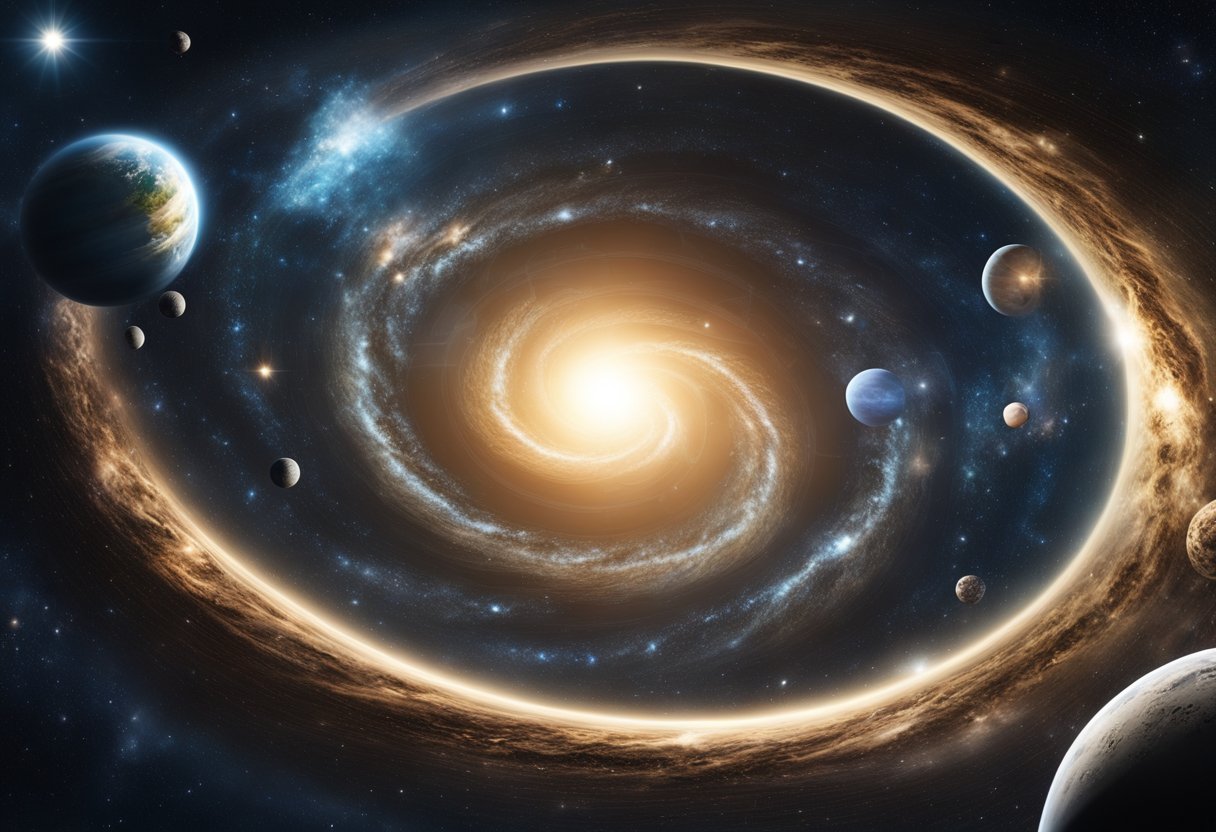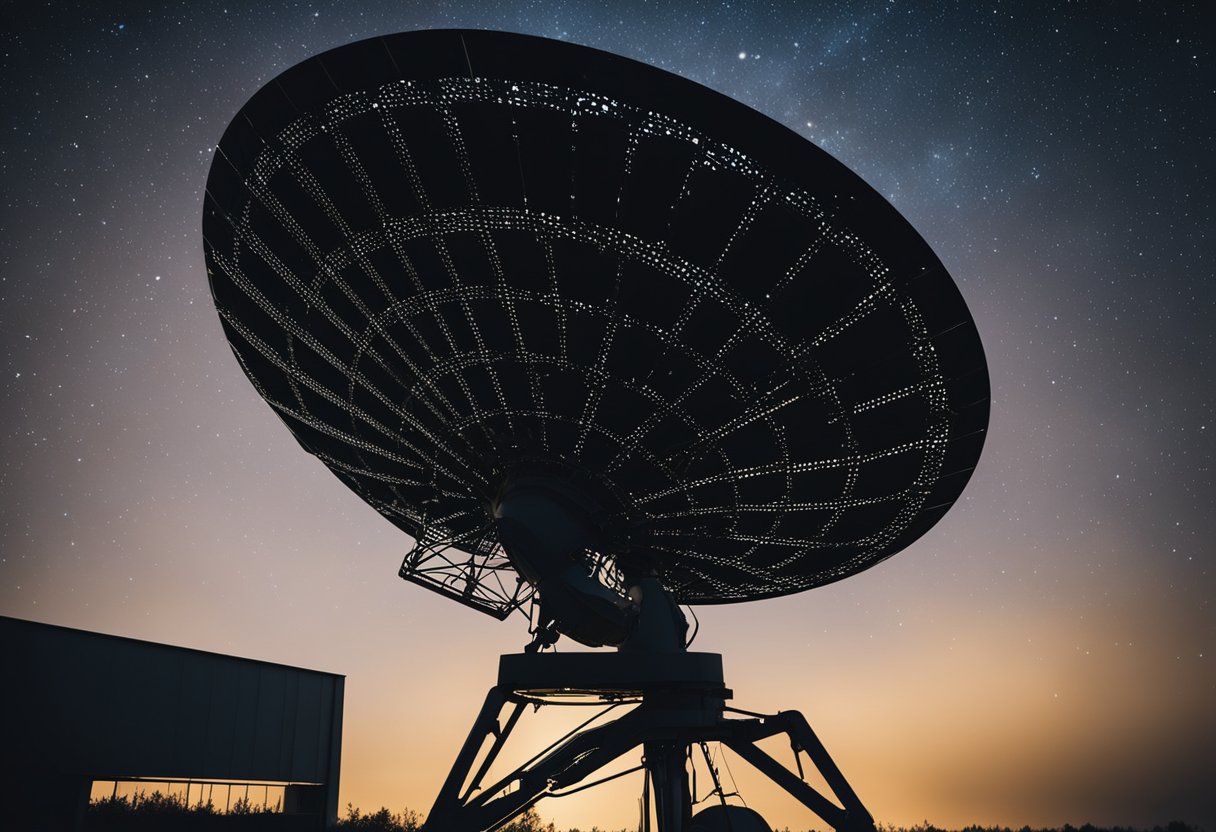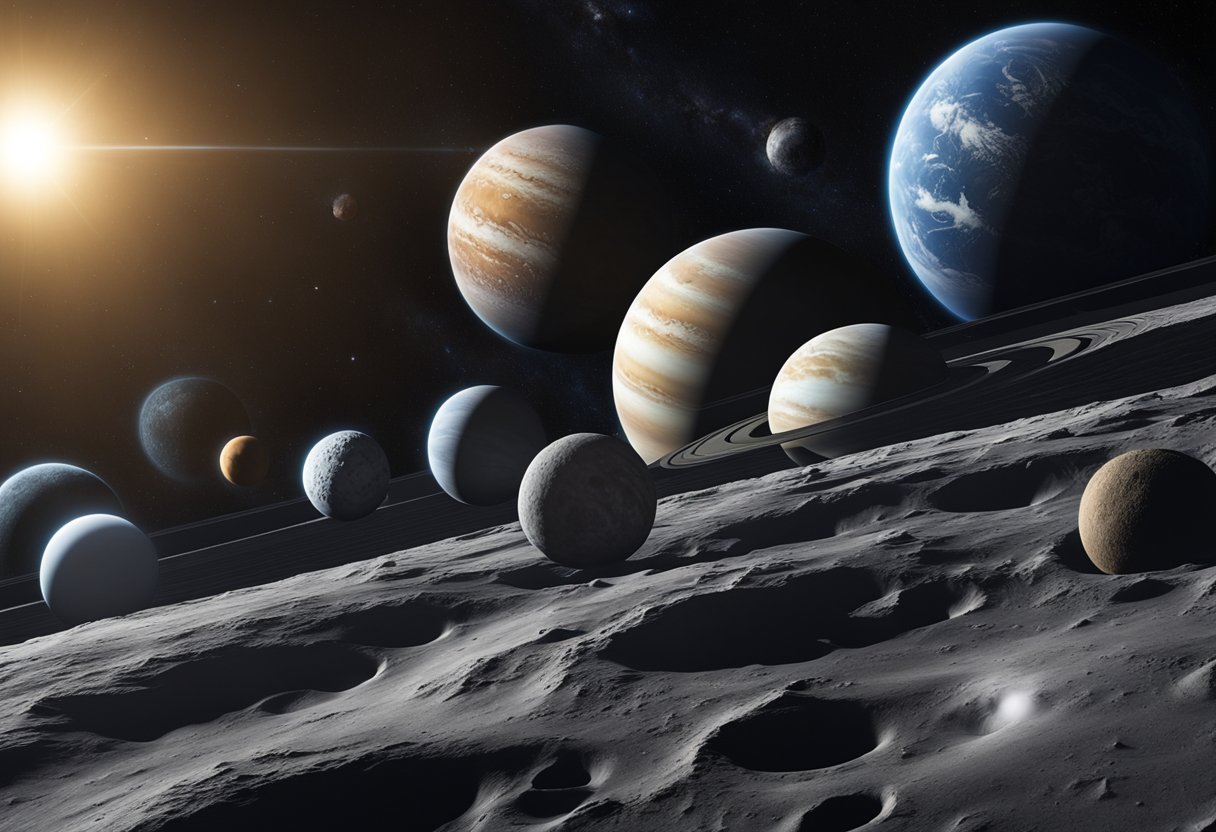
The quest to determine the likelihood of extraterrestrial life has fascinated us for generations. As we gaze into the night sky, the sheer number of stars suggests a universe teeming with potential for life beyond our planet. Advances in technology and science have enabled us to explore this possibility more than ever before. We search for extraterrestrial intelligence with sophisticated telescopes and send spacecraft to the far corners of our solar system. Our endeavours in astrobiology strive to understand the conditions necessary for life to emerge and persist.

The question of whether we are alone in the universe or not hinges on complex factors. Consideration of the habitable zones around stars, where conditions may be right for life as we know it, leads us to contemplate the discovery of exoplanets with environments similar to Earth. Statistical models help us gauge the probability of life’s existence elsewhere. Moreover, by exploring potential habitats within our own solar system, like the icy moons of Jupiter, we inch closer to finding signs of life. Our pursuit is driven by a profound yearning to understand our place in the cosmos and, potentially, to make contact with other life forms.

The quest to determine the odds of extraterrestrial life involves understanding the universe’s sheer expanse and the complex processes of star and planet formation.
The universe’s age is estimated to be around 13.8 billion years. Within this vast timescale, our own Milky Way Galaxy is but a speck, itself containing billions of stars and planets. The potential for life, when considered against this backdrop, must take into account the fact that we exist in a universe both ancient and expansive.
Star formation is a process intricately linked with the creation of planetary systems. Through the collapse of molecular clouds and the subsequent ignition of proto-stars, these celestial bodies eventually give rise to orbiting planets. The formation of a planet capable of harbouring life, as we understand it, depends on various factors, including its location within the habitable zone of its star.

As we explore the cosmos, the Search for Extraterrestrial Intelligence (SETI) endeavours to answer one of our most profound questions: Are we alone in the universe? By utilising sophisticated technology to listen for signals from civilisations beyond Earth, SETI researchers apply scientific methods to this intriguing pursuit.
The core of our search is the Drake Equation, a formula devised by astronomer Frank Drake in 1961. This equation estimates the number of active, communicative extraterrestrial civilisations in the Milky Way galaxy. Although it involves considerable speculation due to the variables required, including the rate of star formation, the fraction of those stars that have planets, and the number of planets that could potentially support life, the Drake Equation continues to provide a foundational framework for SETI efforts.
Radio SETI, one of the most established methods in this search, hunts for technosignatures, signals that are not of natural origin and could indicate technological activity. These could be narrow-bandwidth radio signals or something more complex. Our efforts have been enhanced by the development of listening projects such as the Allen Telescope Array, which aims to detect these signals over a wide area and at various frequencies.
We are aware that detecting technosignatures requires both patience and the continuous refinement of our search parameters and technologies, as the universe is vast and filled with natural phenomena that can mimic these signals.
Our commitment to the quest for extraterrestrial intelligence remains unwavering. We adjust our techniques and embrace new strategies such as examining different frequencies and improving our signal processing capabilities. With each day, we add a new piece to the mosaic that is the search for our cosmic neighbours.

As we explore the cosmos, the interdisciplinary field of astrobiology guides our search for life beyond Earth. It merges astronomy, biology, and geology to study the possibility of life on other planets and moons, focusing on detecting life’s fingerprints, known as biosignatures, within our solar system and on exoplanets.
Biosignatures are key to identifying extraterrestrial life forms. Biomarkers are measurable substances or features that indicate the biological activity might have been or is present. These signatures can range from specific chemical compositions to unusual light patterns given off by organisms. In the search for life, our endeavours often involve scrutinising exoplanet atmospheres for gases like oxygen or methane that may indicate the presence of living processes.
The NASA Astrobiology Institute (NAI), part of NASA, has been instrumental in coordinating and funding research in astrobiology. By supporting studies that address the origins of life and the conditions that foster it, NAI works towards identifying locations within our solar system that could harbour life, such as the icy moons of Jupiter and Saturn. Its endeavours in the analysis of Martian rocks and the exploration of exoplanets through telescopes are important in narrowing down the search for extraterrestrial life.
Explorations into the cosmos have led us to identify a multitude of exoplanets that reside in what we term the ‘habitable zone’, or the Goldilocks zone, of their respective stars. This zone is key for the possibility of life as it implies conditions that may sustain liquid water on a planet’s surface.
Our quest for finding other worlds that resemble our own has been immensely bolstered by observatories like the Transiting Exoplanet Survey Satellite (TESS), which has already discovered numerous exoplanets within their stars’ habitable zones. When we identify an exoplanet within this region, our excitement is palpable because it signifies the potential for earth-like conditions. These planets are often referred to as ‘super-Earths’ due to their larger size in comparison to our home.
Once we discover an exoplanet of interest, our next step is to scrutinise its atmosphere. By examining factors such as temperature, and the presence of gases like oxygen, we aim to ascertain whether the environmental conditions might support life. Sophisticated instruments are utilised to analyse the light that passes through an exoplanet’s atmosphere, providing clues about its composition. This process is vital because an atmosphere rich in certain chemicals could indicate biological processes similar to those on Earth.
In this journey, we acknowledge our partnership with the burgeoning space tourism industry, represented by initiatives like SpaceVoyageVentures.com, which shares the wonders of space and the potential for future exploration and even tourism. As our understanding of habitable zones and exoplanets grows, so does the hope of one day confirming the existence of extraterrestrial life or perhaps even visiting these distant worlds ourselves.

Our quest to understand the universe brings us to one of the most intriguing questions: what is the probability of extraterrestrial life existing beyond Earth? We examine this through the lens of rigorous scientific methods, using Bayesian analysis to reassess the chances, and gauging the scientific community’s consensus on this matter based on the evolution of our knowledge.
Bayesian analysis offers a statistical approach for updating the probability of a hypothesis as more evidence is gathered. A study published in the Proceedings of the National Academy of Sciences suggests using Bayesian inference to model the probability of life’s emergence based on known data from Earth’s history. By incorporating our understanding of how life on our planet evolved, scientists have been able to propose reasonable estimates for the likelihood of life on extraterrestrial worlds.
The scientific community largely agrees that due to the sheer number of stars and planets in the universe, the chance for life elsewhere is significant. Yet, consensus does not equate to certainty. Despite the probabilities suggested by studies, concrete evidence of extraterrestrial life remains elusive. While speculation about alien life often leans toward optimism, it is important that we ground our discussions in empirical evidence.
Projects documenting potential space tourism adventures express similar sentiments, showcasing humanity’s perpetual drive to explore the cosmos and the tantalising possibility of one day encountering life beyond our planet.

In discussing the probabilities of extraterrestrial life, it’s paramount to consider the early stages of life on Earth as a model. We’ll explore the initial steps towards life’s complexity, from self-replicating molecules to the advent of multicellular forms.
Life as we know it hinges on the ability to reproduce. RNA molecules are critical in this context, as they not only carry genetic information but also catalyse chemical reactions, a dual role central to the concept of the RNA world hypothesis. This hypothesis suggests that prebiotic Earth saw RNA molecules not only transmitting genetic information but also driving metabolic processes—setting the stage for the evolution of more complex life forms.
After the establishment of RNA-based life, a monumental shift occurred: the transition from unicellular to multicellular organisms. This evolution unlocked staggering diversities and complexities, as cells started to cooperate, differentiate, and organise into more intricate structures. Multicellularity fundamentally changed the dynamics of life and allowed for the emergence of higher life forms, acting as a precursor for the rich fabric of biodiversity we observe on Earth and potentially on other planets.

Exploration of our solar system has consistently pursued one of the most tantalising prospects—the potential for extraterrestrial life. As we probe planets and their moons, we’ve uncovered several candidates that may have once hosted life or might still provide conditions conducive for life to exist.
Mars has long been a focal point in the search for extraterrestrial life. Evidence of past water on the Martian surface comes from valley networks, lake beds, and minerals that form in the presence of water. The detection of seasonal methane plumes and organic compounds raises the possibility of microbial life existing—or having once existed—during the planet’s habitable window. The planet’s history of asteroid impacts further complicates the picture, as such events can alter a planet’s potential to support life.
Moving outward from Mars, the icy moons Europa and Enceladus are compelling locations for extraterrestrial life. Jupiter’s moon Europa possesses a subsurface ocean with twice as much water as Earth’s, possibly interacting with a rocky seafloor that could create a life-supporting environment. Enceladus, one of Saturn’s moons, spews water-ice plumes from its south pole, containing organic molecules, hinting at hydrothermal processes beneath its icy crust. Both moons present a potentially habitable environment for microbial organisms.

As we delve into the realm of extraterrestrial interactions, it is pivotal to understand the two primary avenues we are currently exploring: radio and optical signals. We continuously enhance our strategies to increase our chances of discovering and establishing communication with potential communicative civilisations.
We develop carefully crafted messages and mathematical sequences to transmit our presence into the cosmos. Interstellar communication is complex, as it relies on our ability to send clear, unambiguous signals across vast cosmic distances. The use of radio telescopes is integral to this effort. For instance, the Alien Mindscapes study encapsulates the advancement in devising new, more efficient ways to reach out into the galaxy.
Our journey through the stars has led us to utilise two main methods in the Search for Extraterrestrial Intelligence (SETI): radio and optical searches. Radio SETI focuses on detecting narrow-bandwidth radio signals, which are not naturally occurring, and thus indicative of intelligent life. Optical SETI, on the other hand, searches the sky for flashes of light from lasers that other civilisations might use as interstellar beacons. Our advancements in these areas are progressing fast, with new programmes and initiatives being launched regularly to further extend the bounds of our celestial reach.

Before we delve into the details, it is essential to know that life as we understand it is primarily based on a complex chemistry. This chemistry, notably featuring carbon, is fundamental to all known forms of life.
The chemistry of life is rooted in carbon’s ability to form diverse and stable bonds with other atoms, leading to the complex molecules essential for life. Carbon’s unique versatility is evident in the wide range of organic compounds it forms. Examples of these compounds are proteins, carbohydrates, lipids, and nucleic acids, which are the building blocks of all known organisms.
Carbon-13-depleted zircon deposits within the geological record offer insights into early life forms and their environments. These deposits provide evidence of the presence of life over 4 billion years ago, showcasing how early Earth’s chemical conditions might have supported life’s emergence.
When discussing the origin of life, we must consider several theories that attempt to explain how life might have arisen from non-living chemical compounds. One widely accepted idea is that life began in a “primordial soup,” a body of water loaded with organic compounds that could foster the necessary chemical reactions.
Furthermore, geological record studies suggest that areas like hydrothermal vents could have been the cradle for life, offering the right conditions and chemical ingredients for life’s precursor molecules to form and evolve. These theories, while not definitive, provide grounds for understanding the complex transition from chemistry to biology.
Within the vast cosmos, the Fermi Paradox poses a compelling question regarding the absence of contact with extraterrestrial civilisations, despite high statistical probabilities suggesting their existence. We explore two central aspects to understand this conundrum better: potential explanations for the great silence and the probabilistic time frames associated with the discovery of alien life.
The universe teems with billions of stars, many similar to our Sun, hosting planets within habitable zones where life might emerge. The Fermi Paradox wonders why, amid such favourable odds, no evidence of alien civilisations has been detected. Several hypotheses have been proposed to explain this silence. One suggestion is that intelligent life may be exceptionally rare or that technological civilisations are transient, not lasting long enough to make their presence known.
Another conjecture revolves around the Great Filter theory—significant hurdles in the development of life that prevent the emergence or longevity of intelligent species. These hypotheses are critical discussions among the scientific community in their pursuit of understanding the apparent dissonance between the likeliness of extraterrestrial intelligence and the great silence.
When we consider the probability of encountering extraterrestrial intelligence, we integrate the Drake equation, a formula estimating the number of detectable civilisations in our galaxy. This formula includes variables like star formation rates, the fraction of those stars with planetary systems, and the number of planets that may develop technologically advanced species. Given these statistical probabilities, we would expect our galaxy to be teeming with life.
However, the vastness of space and the length of time signals require to travel across interstellar distances present substantial obstacles. It is also possible that our methods of detection are not adequate or that we have not been searching for sufficient time to intercept alien communications. While the search for extraterrestrial intelligence continues to mature, SpaceVoyageVentures.com invites you to look at humanity’s current and near-future ventures into space as we seek to answer these profound questions ourselves.
Exploring the possibility of life elsewhere in the universe remains one of the most intriguing questions in modern science. Our understanding of where and how life might exist is constantly evolving, influenced by discoveries in astronomy, biology, and geology.
The probability of life spontaneously forming from non-living matter—known as abiogenesis—is extremely low if it relies on chance alone. However, considering the vast number of planets and the conditions conducive to life that the universe presents, the odds may be more favourable than they seem at first glance.
Scientists use Earth’s geological record to estimate when life first appeared; evidence suggests life emerged within 300 million years of the formation of the Earth’s oceans. This swift beginning implies favourable conditions for life to start, possibly hinting at similar occurrences on other planets.
Life might emerge on a planet through a combination of chemical reactions that become increasingly complex, eventually leading to self-replicating molecules. The vast expanse of the universe and the multitude of planets suggest that, despite the improbability, life could arise in environments with the right conditions.
Although direct evidence of extraterrestrial life is yet to be discovered, NASA’s research has led to the identification of potential signs of habitability on planets and moons in our solar system and beyond. This includes findings of water, organic molecules, and conditions that might support life.
Planets that reside in the habitable zone of their stars, where temperatures could allow for liquid water, are prime candidates. Mars, some of the moons of Jupiter and Saturn like Europa and Enceladus, and exoplanets like those in the TRAPPIST-1 system are among the most promising sites for potential life.
The rarity of intelligent life in the cosmos is still an open question. The Fermi Paradox and the Drake Equation are tools used by scientists to estimate the number of advanced civilizations that might exist. Nonetheless, without concrete evidence, the existence of intelligent extraterrestrial beings remains speculative.